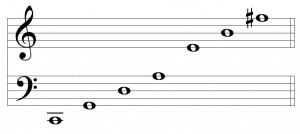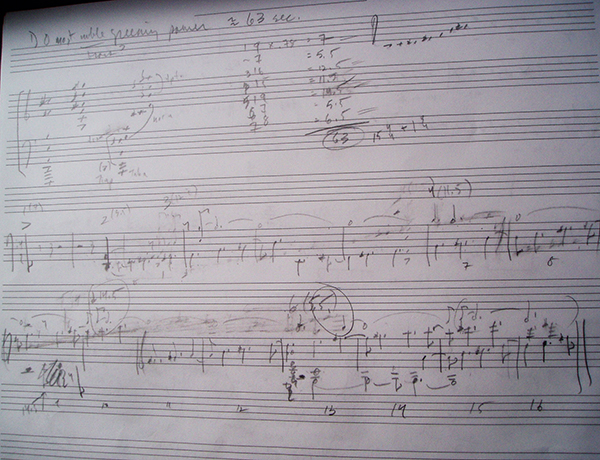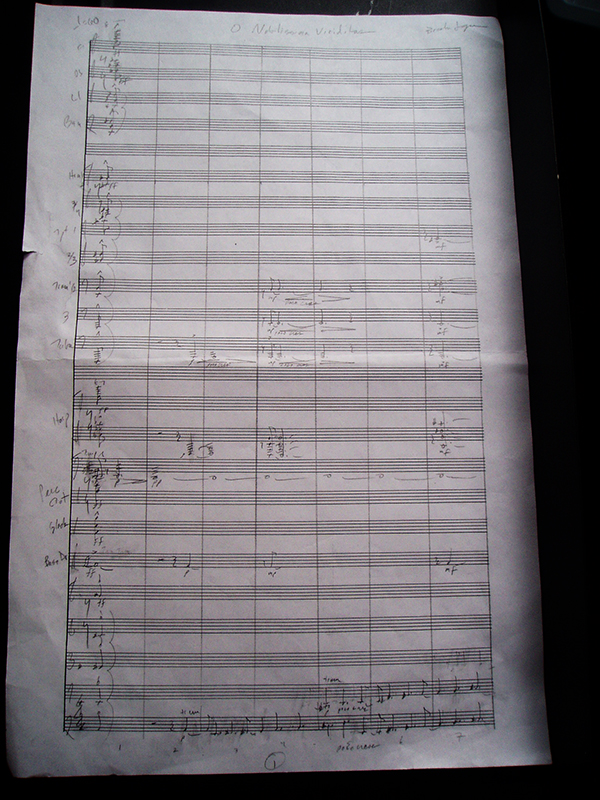“O most noble greening power”
I want “most noble” to be expressed through the nobility of the brass section. There will be seven chords, with durations proportional to the poetic structure. Each will be constructed from perfect fifths, with the final chord containing all twelve chromatic pitches (11 brass players plus timpani). This is a nice way, I think, to musically depict the vastness of Hildegard’s vision and the totality of creation. (Perfect fifths, so named because of their close relationship to the natural overtone series, have long been intervals used by composers to suggest the natural world and organic processes.)
“Greening power” (“viriditas”) will emerge from the string section in the form of an ascending scale that will eventually also contain the harmonic interval of the perfect fifth. When one builds scales from perfect fifths, you can easily create a major scale with a raised 4th note, also known as the Lydian mode:
Finally, the piece will begin, literally, with a bang. This tutti chord, played with an accent and spanning the full range of the orchestra, will activate the pedal tone we’ll hear from the timpani; it will also act as a metaphorical “big bang,” as if the universe is suddenly created and set into motion in a single stroke. The following images are from my sketchbook and the first page of the orchestra score.





Leave a Reply